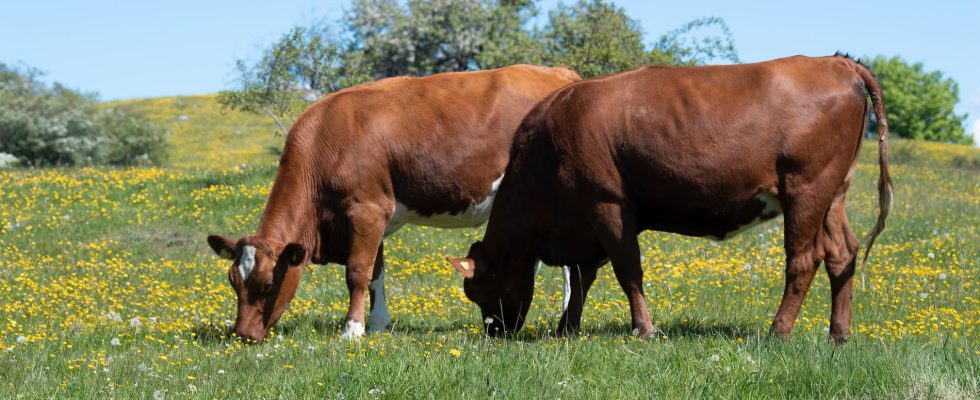Cows grazing in virtual enclosures with invisible fences. The new technology can make it easier for farmers – but also have positive effects for biodiversity and animal welfare, according to the researchers behind the project.
Seven heifers on a farm in northern Uppland have been equipped with specially designed collars that are connected to both the GPS and the telecommunications network and are controlled via an app on the farmer’s mobile phone.
When the heifers cross the border of their grazing area, the collars send out a sound signal that gradually increases in frequency. If they return to the area, the sound is silenced, but if they continue, they receive an electric shock.
– By moving the virtual boundaries, you can control the animals to graze where you want or where it is most needed, says Lotten Wahlund, PhD student at the Swedish Research Institute (RISE) and one of the researchers behind the project.
The technology has been tested on other animals before, but this is the first time it has been tested on cattle. The project has been carried out in collaboration between RISE, the Swedish University of Agriculture (SLU), the World Wildlife Fund (WWF) and the EU project Super-G.
Biodiversity
Lotten Wahlund believes that the technology does not only offer the farmer a solution to the problem of expensive and high-maintenance physical fences. It also contributes to protecting and promoting biological diversity on natural pastures, she believes.
– With the help of the technology, you can fence off sensitive areas where you want it to seed and flower or where birds nest. When it is finished, you can open it up for the animals to graze there again.
In addition, the technology has the potential to improve animal welfare. By monitoring the animals’ movement patterns and behavior, the farmer can detect any deviations at an early stage, such as an animal lying still for a long time or not following the herd in a natural way, explains Lotten Wahlund.
Missing permit
According to the Animal Welfare Ordinance, it is currently prohibited in Sweden to use equipment or devices that give animals an electric shock in order to control their behavior.
The Swedish Agency for Agriculture, which tests permits for new technology for animal husbandry, has requested more knowledge about how the technology affects the animals before the authority approves it for general use.
Lotten Wahlund has begun analyzes of the animals’ behavior and stress levels. The full results of the analyzes will only be presented this autumn, but the preliminary ones are positive, she believes.
– So far, we see no differences in the stress levels in the animals’ hair cortisol, compared to animals that graze in physical enclosures.
FACTS
That’s how the technology works
The animal wears a collar that emits a gradually increasing sound as it crosses the virtual boundary.
If the animal defies the limit, it receives a mild electric shock from the collar. The electric shock (0.2 Joule and 1.5 kV) is weaker than what animals receive from ordinary electric fences (5 Joule and 7 kV).
If the animal stays outside the area, the collar is deactivated after three electric shocks, and a message is sent to the farmer that the animal has escaped.
The GPS function continues to work to locate the animal, even if it is outside the virtual area. When the animal returns to the paddock, the collar is automatically activated again.
Source: SLU, RISE, WWF
Read more
